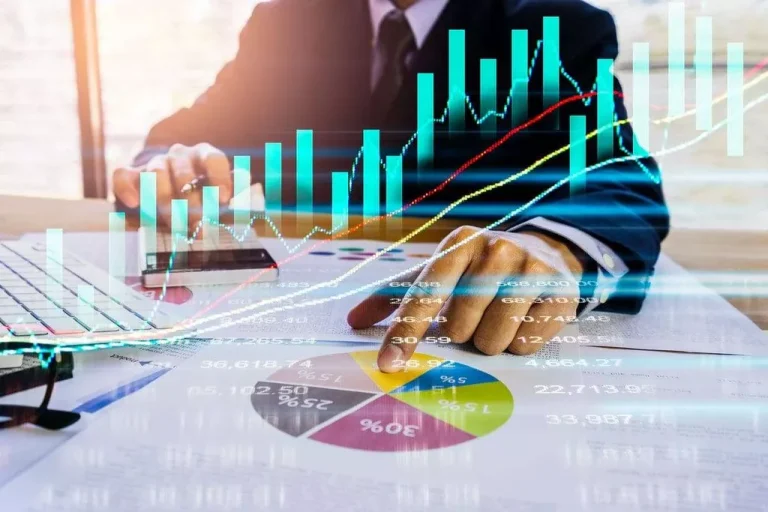Content
Exchange Traded FundsETFs are UCITS III compliant and usually track equity https://www.xcritical.com/ or fixed income market indices. While each ETP provider favours a slightly different definition, the general tendency both in the marketplace and the media is to use ETF and ETP as perfectly interchangeable terms. It is therefore important that investors make sure they understand what the provider is referring to when looking at these products.

A financial professional will offer guidance based on the information provided and offer a no-obligation call to Blockchain better understand your situation. For information pertaining to the registration status of 11 Financial, please contact the state securities regulators for those states in which 11 Financial maintains a registration filing. Regulators enforce compliance with applicable laws and regulations, aiming to protect investors and maintain market integrity. ETCs can track single commodities, baskets of commodities, or commodity indices.
And, like mutual funds, they track an underlying index or asset or might reflect an actively managed strategy. Exchange-traded funds represent etp vs etf a cost-effective way to gain exposure to a broad basket of securities with a limited budget. Instead of buying individual stocks, investors buy shares of a fund that targets a representative cross-section of the wider market. However, there are some additional expenses to keep in mind when investing in an ETF.
The same variety of options – in both mutual funds and ETFs – can be found in other asset classes, including bonds and commodities. There are also mutual funds and ETFs that aim to offer “all in one” portfolio solutions, meaning combinations of stocks, bonds and other assets. IShares Core Allocation ETFs, for example, make it possible to invest in a diversified portfolio for as little as $1 if you buy fractional shares of iShares at Fidelity. For all their similarities, there are big differences between ETFs and mutual funds, which potentially have major implications for investors. ETFs have become popular with investors in large part because they can provide a way to buy a potentially diversified investment.
Because ETFs are traded on stock exchanges, they are easily bought or sold. ETFs provide access to a wide range of investment options, covering a broad range of asset classes, sectors and geographies. This information should not be relied upon as research, investment advice, or a recommendation regarding any products, strategies, or any security in particular. This material is strictly for illustrative, educational, or informational purposes and is subject to change.
Exchange-traded products (ETPs) are securities that track an underlying index, commodity, or financial instrument. Exchange-traded funds (ETFs) are a type of ETP that tracks an underlying basket of stocks. ETPs are traded on exchanges, and their prices fluctuate throughout the day. ETFs are passively managed, meaning they aim to track the performance of their underlying indexes.
The risk of loss in trading foreign currency can be substantial and may be magnified if trading on margin. Customers should therefore carefully consider whether such trading is suitable for them in light of their financial condition, risk tolerance and understanding of foreign markets. It might seem strange to pick a time to sell an ETF you only just bought, but having a clear plan from the start could help you maximize your potential profit or at least minimize your potential loss. For instance, you might want to pick an upper and lower price your ETF could hit as your get-out signals. The main difference between ETFs and stocks is that ETFs, depending on the fund, can potentially provide a diversified investment. Investing in ETPs offers numerous benefits, such as diversification, lower costs, tax efficiency, and ease of trading.
An ETP, or exchange traded product, is a type of investment vehicle that allows investors to buy and sell shares in a basket of underlying assets. ETPs are similar to ETFs in that they offer access to a wide range of investments, but they differ in how they are structured. Unlike ETFs, which are passively managed index funds, ETPs are actively managed by a fund manager.
Carefully consider the Funds’ investment objectives, risk factors, and charges and expenses before investing. This and other information can be found in the Funds’ prospectuses or, if available, the summary prospectuses, which may be obtained by visiting the iShares Fund and BlackRock Fund prospectus pages. After setting goals and comparing ETFs, go deeper to learn more about how each ETF measures up on key metrics, including performance, risk, cost, and core holdings. The value of the ETF is based on the net asset value (NAV) of the underlying stocks, so if the stocks in the portfolio go up in value, the ETF will also increase in value.
In addition, exchange Traded Products have also led to new investment strategies, such as smart beta and factor-based investing, which seek to capture specific investment factors or market anomalies. Unlike with a mutual fund, retail investors may transact at prices that can deviate—sometimes significantly—from the underlying value of the ETP. Be sure to compare an ETP’s market price with published estimates of its value (such as an intraday indicative value) and also consider order types other than market orders. Public sources, as well as your investment professional, generally can provide timely information on the extent to which an ETP’s current market price might be at a premium or discount to its estimated value. As with other investments, you can make money with ETPs if you sell for more than you paid. ETFs are open-ended funds that track an underlying index, commodity, or a basket of assets and are regulated in Europe under UCITS (Undertakings for Collective Investment in Transferable Securities).
This information should not be relied upon as a primary basis for an investment decision. Rather, an assessment should be made as to whether the information is appropriate in individual circumstances and consideration should be given to talking to a financial professional before making an investment decision. Our ETFs and index capabilities provide hundreds of choices so investors can assemble their own portfolio playbooks. ETFs are widely available commission free on most online brokerage accounts and through investment professionals. You can also purchase directly through Fidelity, where iShares ETFs trade commission-free online.

Investment objectives and strategies, which are detailed in prospectuses and related documents, can vary from one ETP to another. The vast majority of ETPs are designed to track the performance of a particular market index or benchmark and are similar to index mutual funds. Importantly, ETPs tracking the same index may do so in different ways, so be sure to compare. In order to achieve their investment objectives, ETF providers can either use physical or synthetic replication. Physical replication can be achieved either through full replication or optimised sampling. Synthetic replication generally reduces costs and tracking error but increases counterparty risk.

ETPs that invest in commodities, currencies or related futures may be structured differently, and some may even be registered under the Investment Company Act of 1940. Know what type of ETP you’re investing in, since the structure can impact the product’s costs, risks and tax consequences. On the other hand, while ETNs also trade like stocks, they’re more similar to corporate bonds in that they’re debt issued by a financial institution and subject to the credit risk of that issuer.
Liquidity risk arises when an ETP’s trading volume is low, which can lead to wider bid-ask spreads and difficulty executing trades at desirable prices. Investors should be urged to consult their tax professionals or financial professionals for more information regarding their specific tax situations. This material contains general information only and does not take into account an individual’s financial circumstances.
